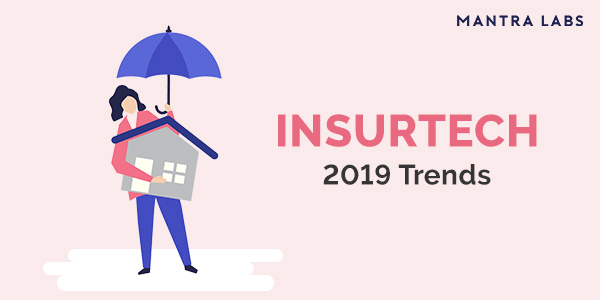When I look back at how rapidly InsurTech is evolving over the years, it makes me wonder what will happen in the next few years. Although we cannot be sure of the technological advancements we can predict some of them for the next year.
Could 2019 be the year of some more interesting digital transformation in InsurTech? Here are some of our predictions:
1. Underwriters will gain knowledge with AI:
Underwriting is one of the essential components of the insurance business and no matter what no machine can replace underwriters. But, we can expect that by 2019 underwriters will get a lot of assistance for their work procedures through AI and RPA. It will help them manage high volumes of data, parse and validate evidence faster and more cleanly through automation. Reports suggest that insurers spend most of their time doing mundane tasks such as data entry instead of performing core operations. The relevance of AI in 2019 will be more impactful for underwriters as it will free them from those additional time-consuming tasks.
2. Blockchain for centralising medical data:
Blockchain provides a central platform for digital medical records that underwriters can access securely. In the next year with the evolution of the regulatory environment around blockchain transaction and the streamlining and automation of underwriting processes, the blockchain will play a vital role in this industry.
3. Top-notch security:
The one thing that all sectors struggle with when they adopt the digital platform is cybersecurity. The networks are always vulnerable to cybercriminals and could be exploited at any point. Insurance firms also face the same issues with legacy systems that are often hard to update so 2019 will also see some advancement in this field and will focus on making platforms much secure, reducing risk across the enterprise.
4. Improved customer experience:
Customers are becoming digitally savvy by each passing day, and they expect a compelling user experience for every digital transaction they make. The insurers need to ensure that they provide their customers as well as the distribution partners a well crafted digital platform that is compatible with new devices while also offering them a personalised experience. This step will also be instrumental in targeting the millennial generation who generally do not take an interest in insurance policies because of its cumbersome architecture.
5. Increased automation:
Automation is gaining momentum in the insurance industry, but it will become more prominent across the entire customer experience and the value chain. The use of chatbots for processing simple requests, quoting and analysing complex issues that might need human intervention will all be a part of advanced automation.
6. Hyper-personalised policies:
The one thing that Insurtech will surely see in 2019 are policies that are customised depending on the needs of the insurants. The agents will make use of the predictive and data analytics to create policies that are cost-effective and useful for both the parties irrespective of their policy size.
All the predictions stated above will play a vital role in Insurtech in 2019, and one can expect accelerating growth in fields like AI, automation of processes and digitalisation of the underwritings. Data and analytics is the underlying key that will enable all these advancements to take place smoothly.
Knowledge thats worth delivered in your inbox





